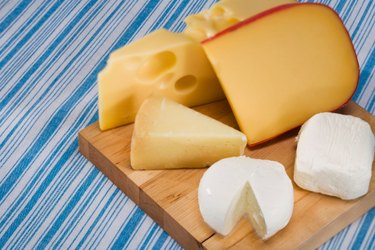
A good cheese plate contains cheeses of several tastes and textures. The texture of cheese, whether it's hard and crystalline like Parmesan Reggiano or soft and bloomy like a brie, depends largely on its moisture content, age and exposure to mold. The lines between types of textures of cheese are not firm with many cheeses falling into several categories. However, if you keep a few general definitions for cheese types and textures in mind, you can maneuver your way through a cheese counter with much more confidence.
Soft Cheeses
Video of the Day
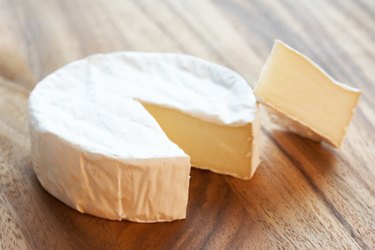
Soft cheeses fall into two categories: fresh cheeses and ripened cheeses. Fresh cheeses include ricotta, feta, cream cheese and mozzarella. Fresh cheese is not supposed to age and curds are barely pressed. Fresh cheeses have a high moisture content -- around 80 percent -- that gives them a very short shelf life, often only a few days. Soft ripened cheeses include brie and Camembert. They are coated in a layer of penicillin bacteria, which creates the bloomy, tangy rind on brie and Camembert's outside. Soft ripened cheeses are left to age on shelves about four to eight weeks. They have a lower moisture content than fresh cheeses but a high fat content, usually between 60 and 70 percent, that gives them their decadent, creamy texture.
Video of the Day
Semi-soft
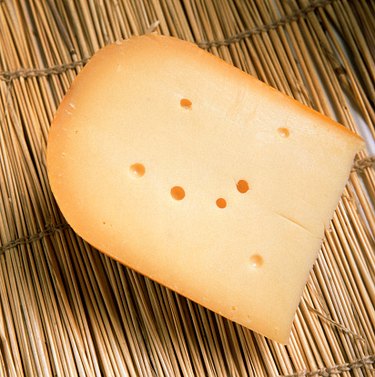
Semi-soft cheeses, such as Havarti, Gouda, Fontina and Monterey Jack, are defined by a high moisture content, between 54 to 63 percent. This gives them a very low melting temperature, around 55 degrees. They are often dipped in wax before aging, which keeps the cheese moist inside while it sits on shelves for four to six weeks. The high moisture also gives this texture of cheese a mild taste, as when cheese dries out, its flavors become more concentrated.
Semi-Hard Cheeses
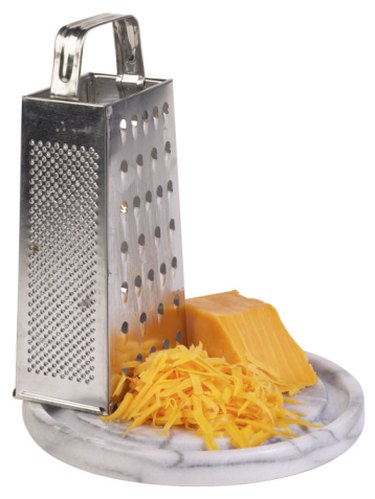
Semi-hard, or semi-firm, cheeses, such as cheddar, Gruyere and Jarlsberg, are the most popular style of table cheese because of their easy-to-slice texture and generally mild flavor and odor. They are pressed into molds before aging to compact the cheese whey and let moisture out, usually with a moisture content between 49 and 56 percent. After aging, cut semi-hard cheeses store well in home refrigerators -- up to several months if they are kept dry and stored separately from other foods.
Hard Cheeses
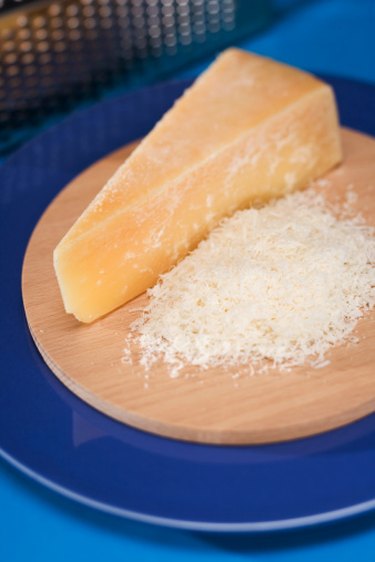
Hard cheeses include Parmesan, Pecorino, aged Gouda and aged asiago. They are brined in salt baths for up to 20 days and then pressed in large molds and aged for several months up to seven years. This gives hard cheeses a very strong, compacted, salty flavor and a dry, crumbly, crystalline texture that can be difficult to slice. These cheeses are often served grated or in thin shavings.